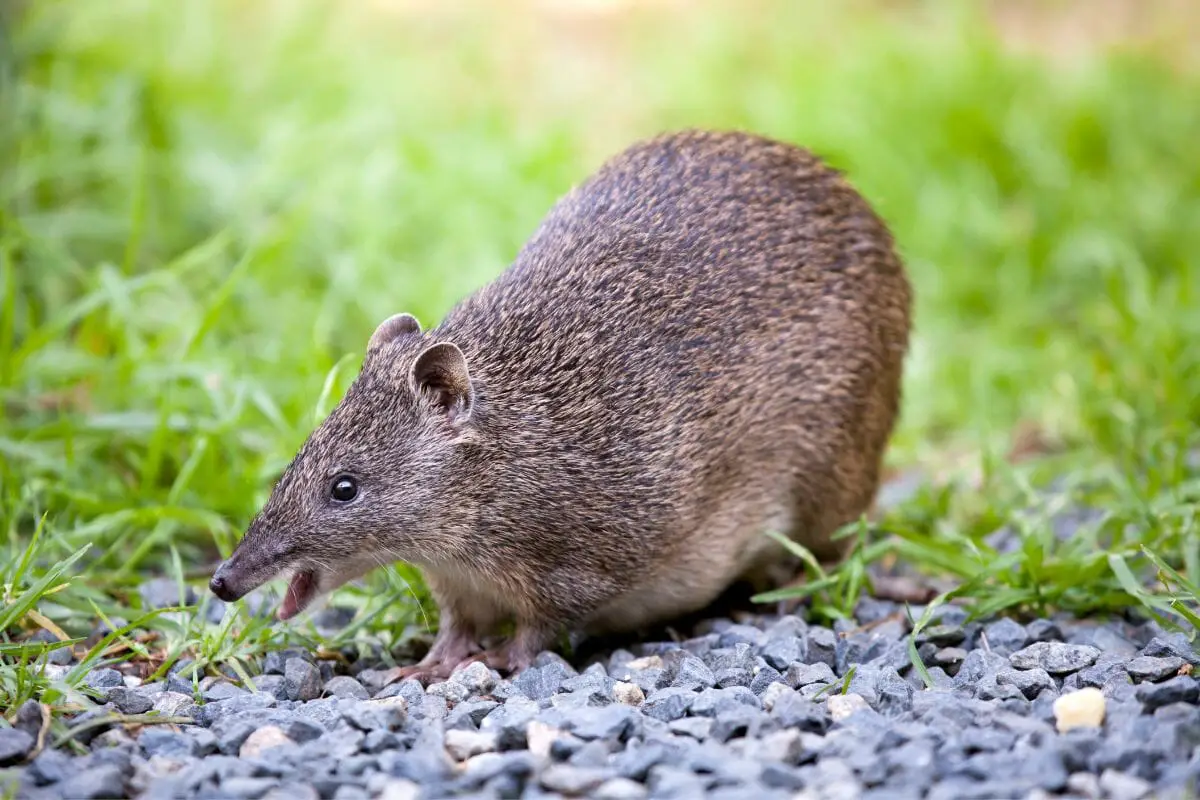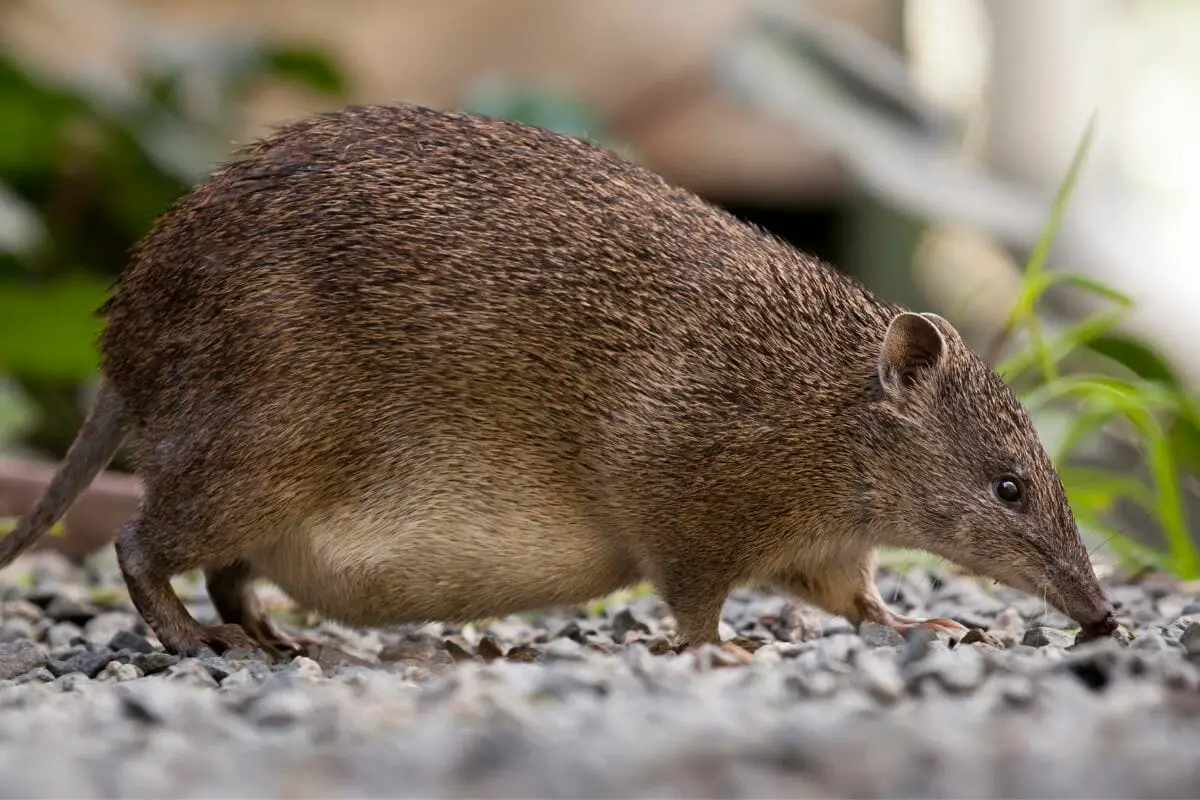Are you curious about the differences between a Bandicoot and a Quenda? Many people find it confusing, as these two animals look quite similar at first glance. Understanding these creatures can be tricky, especially with all the misinformation out there.
In this article, we’ll clear up the confusion once and for all. You’ll learn whether Bandicoots and Quendas are the same or different, and we’ll explore some fascinating facts about their behavior and habitats.
What Is The Difference Between A Bandicoot And A Quenda?

Many people often wonder what the difference between a Bandicoot (see also: Do Bandicoots Carry Ticks? (How To Deal With Them))and a Quenda is, but what they don’t realize is that a Quenda is actually a type of Bandicoot, which means that there are no differences at all!
The Quenda Isoodon fusciventer is also more commonly known as a Southwestern Brown Bandicoot and is also a species of Marsupial(see also: Are Racoons Marsupials?). Most Quendas tend to be relative in size to that of a small rabbit, weighing up to around 2 kilograms on average.
In terms of their length, most Quendas usually measure between 28 to 36 centimeters and are accompanied by a tail that can vary between 9 to 12 centimeters in length too.
Quendas are characterized by their nose, which is particularly pointed and long, as well as their short and rounded ears.
Their coloration tends to be a mixture of greyish brown color, usually paired with a white or creamy colored belly, with their fur being coarse and short. Their tails tend to have a much darker brown coloration than their bodies.
Unlike rats, Quendas are able to climb, as well as having a much stouter shape, as well as having a slightly shorter tail too.
Quenda Habitat
Found throughout most of Southwestern Australia, Quendas make their homes by burrowing cone-shaped holes and constructing their nests using bunches of leaves and sticks under shrubbery, although it has been known for Quendas to use emptied rabbit burrows.
Places such as jarrah woodlands, banksia, or swamps are often the most common places where Quendas make their nests.
Unlike some other creatures, Quendas tend to have more than just one nest, and will sometimes even create up to seven different nests in their home vicinity.
Since Quendas have had to adapt to both suburban and urban environments, it means that it isn’t uncommon for them to make their way into the gardens and homes nearby, looking for both food and shelter, especially around the remaining bushes in parks and other urban areas.

Quenda Diet
Quendas are omnivorous creatures and their diet mainly consists of invertebrates such as adult beetles, larvae, and earthworms, as well as things such as fungi found underground, as well as subterranean plant materials too.
The diet of these creatures tends to vary depending on the season, as they will shift their diet depending on what is available to them during the different seasons.
With Quendas often gravitating towards gardens and other inhabited areas, many people often get tempted to feed these animals themselves.
However, whilst Quendas might be known to take grains, fruits, or pet food, none of these artificial sources of food are beneficial for Quendas, and wild animals becoming dependent on unnatural food sources can lead to numerous problems such as the promotion of disease, the loss of important predator awareness skills, as well as the reduction of reproductive success.
A well-vegetated area will have everything a Quenda needs in order to live and thrive, which means they should have no use for any food from outside sources.
Quenda Behavior

For the most part, Quendas is a nocturnal species, however, during the winter months, they are known to venture outside during the daytime, with the most common sightings of these animals taking place either during dusk or dawn.
It’s not uncommon for Quendas to make their way into gardens, and if they do find themselves in a garden, it’s also not unusual for them to go about digging up lawns in order to try and find food, with things such as spiders, beetles, fungi, and grubs being common sources of food for a Quenda, and all of them can be found in a backyard, but you can tell whether or not a Quenda has been visiting a garden based on its digging methods, which some people compare to rabbits, although a rabbit’s diggings tend to be blunter and larger than that of a Quenda.
Quenda Breeding
Quenda’s breeding habits include breeding for most of their year, although there tends to be a peak during the spring season.
The female Quenda are able to carry up to six of their young inside of their pouch, however, they don’t tend to have more than four young in their litter, but the litter can also be as little as two young, which are referred to as joeys.
Depending on the food availability throughout the year, up to three litters can be raised in the span of a year, and the older the female Quenda is, the more litters they are likely to raise.
The gestation period for Quendas tends to last around for an incredibly short period of time, usually lasting between 12 to 15 days. The joeys of the Quenda are then weaned until they reach somewhere between 60 to 70 days old.
Since the oestrous period of a Quenda can begin again whilst the mother is still lactating, it means that as soon as the pouch of the mother has been vacated, then a new litter is able to be born.
Unfortunately, this means that the rate of mortality is particularly high for juvenile Quendas.
Are Quendas Threatened?
Unfortunately, Quendas numbers have suffered, especially since the 1960s.
The loss of habitat, the increased number of predators (such as cats, foxes, and dogs), vehicle strikes as well as the number of pools and ponds found in most residential areas leading to Quendas drowning, and the number of incidents where Quendas are poisoned by bats and snails have all contributed to their decline.
As a result of this, Quendas are seen as a Priority 4 listed species, and their survival is ultimately dependent on conservation efforts, where their numbers are monitored closely to ensure that they aren’t declining.
Conclusion
Despite the misconception that Bandicoots and Quendas are actually different species altogether, these animals are particularly fascinating due to their rat-like appearance, and habit of appearing in gardens and other suburban areas all over southern Australia, which is why so many people take an interest in these creatures.
So, we hope you’ve enjoyed learning more about these creatures, and although there are no differences to explore, these creatures need conservation efforts in order to survive, so awareness about their struggle is important!
FAQs
Are quendas and bandicoots the same?
Yes, Quendas and Bandicoots are essentially the same. Quenda is a term specifically used for the Southwestern Brown Bandicoot, a type of marsupial found in Australia.
What are baby Quendas called?
Baby Quendas are called joeys. They stay in their mother’s pouch where they continue to develop after birth.
Do Quendas eat fruit?
While Quendas primarily consume invertebrates and fungi, they can eat fruits. However, relying on fruits or other artificial food sources is not ideal for their health.
What will Bandicoot eat?
Bandicoots are omnivores. Their diet mainly includes insects, worms, and plant roots. They are adapted to a varied diet depending on what’s available seasonally.
- What Should I Do If A Koala Bites Me? Safety Guide - 2024-05-30
- Are Kangaroos Born Without Hind Legs? A Fascinating Journey - 2024-05-30
- Animals That Look Like Squirrels - 2024-05-30








